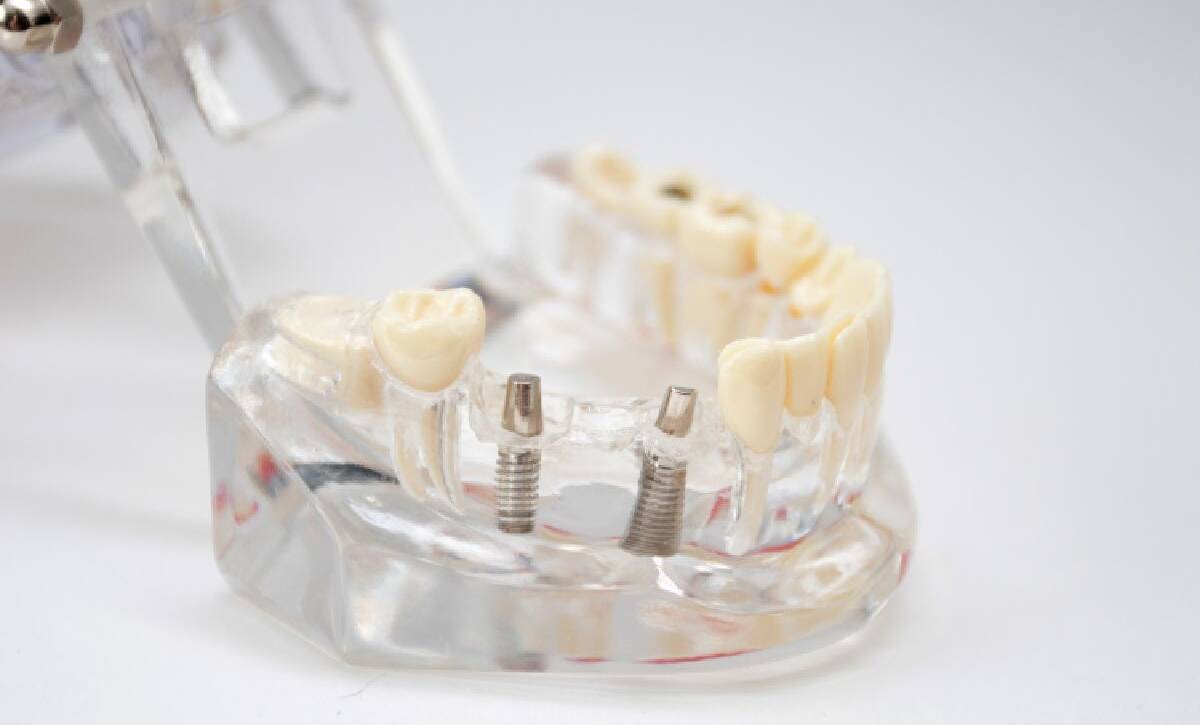
When you’re getting a dental implant, you hear all kinds of new words, titanium post, crown, healing cap, and then your dentist mentions something called an abutment. You nod politely, but deep down, you’re thinking: Wait, what exactly is that?
You’re not alone. Many patients assume an abutment is just another part of the implant screw, but it’s actually the unsung hero of your new smile, the connector that gives your dental implant both its strength and its beauty.
At Humble Memorial Dental Group, we believe that when patients understand what’s happening inside their mouth, they feel more confident, more at ease, and more in control of their oral health. In this guide, we’ll walk you through everything you need to know about dental implant abutments, what they are, how they’re placed, why they matter, and how to care for them once they’re in place.
By the end, you’ll not only understand this small but mighty part of your implant, you’ll know exactly how it helps your new smile last for years.
Key Takeaways
- The abutment is the connector that links your implant post to your crown, giving your new tooth its strength and natural appearance.
- Abutments can be stock, custom, or healing, depending on your treatment plan.
- Proper hygiene and regular checkups help your implant system stay healthy for decades.
- If your abutment ever feels loose or sore, contact your dentist, it’s usually a quick, simple fix.
- The implant experts at Humble Memorial Dental Group ensure every abutment is placed with accuracy, comfort, and care.
What Exactly Is a Dental Implant Abutment?
A dental implant is made up of three essential parts working together:
- The implant post: a titanium screw placed in your jawbone that acts as an artificial root.
- The abutment: a small connector that attaches the implant to the crown.
- The crown: the visible, tooth-colored cap that restores your smile.
The abutment is the bridge between your implant post and your visible tooth. It’s what allows your new crown to sit firmly in place and function naturally when you chew or speak.
Most abutments are made from titanium or zirconia, both known for being strong, safe, and compatible with the body. Once the implant has fused with your jawbone, the abutment is attached, and your permanent crown is placed on top.
“The abutment is the connection that makes your new tooth function just like the real one,” explains Dr. Liem Nguyen, implant surgeon and lead provider at Humble Memorial Dental. “It’s precision-engineered to fit perfectly and provide long-term stability.”
The Role of the Abutment in Your Implant System
Without the abutment, your dental implant would just be a screw hidden under your gums. Its role is to:
- Anchor the crown securely so it feels stable and natural.
- Distribute pressure evenly when you bite or chew.
- Support the gum tissue to maintain a healthy, natural shape.
The abutment is where strength meets aesthetics, it gives your new tooth the stability of a real root and the seamless appearance of a natural smile.
When Is the Abutment Placed?
The timing depends on your treatment plan and how quickly your body heals.
Most people receive their abutment in a two-stage process:
- First, the implant post is placed into the jawbone.
- Over three to six months, it fuses with your bone (osseointegration).
- After healing, your dentist reopens the gum slightly, attaches the abutment, and later adds your crown.
Some patients are candidates for immediate abutment placement, where the abutment is attached the same day as the implant. This shortens treatment time, but it’s only possible when your jawbone is healthy enough to support the implant right away.
The procedure is quick and virtually painless. It’s performed under local anesthesia and typically takes under 30 minutes. Mild soreness may occur afterward but fades within a day or two.
Types of Dental Implant Abutments
At Humble Memorial Dental, your dentist selects or custom-designs the abutment that best fits your anatomy, bite, and cosmetic goals.
Here are the three main types:
1. Stock Abutments
These are pre-made in standard sizes and shapes. They’re:
- Affordable and reliable
- Best for back teeth, where precision shaping isn’t as visible
- A great option for straightforward implant cases
2. Custom Abutments
These are digitally designed just for you using 3D scans. They:
- Fit your gums perfectly for a natural contour
- Offer a more seamless, realistic look, especially for front teeth
- Provide optimal comfort and long-term function
3. Healing Abutments (Healing Caps)
Placed temporarily after surgery, they:
- Protect the implant site during healing
- Shape the gum tissue for a more natural final appearance
- Are later replaced with your permanent abutment
Whether standard or custom, every abutment at our practice is chosen to blend stability, comfort, and aesthetics, so your implant looks and feels like it was always meant to be there.
How to Care for Your Dental Implant Abutment
Once your abutment is in place, caring for it is almost the same as caring for your natural teeth, with a little extra attention to the gumline.
- Brush twice daily using a soft-bristled toothbrush or an electric brush. Gently clean the area where the crown meets your gums to remove food particles and plaque.
- Floss or use a water flosser daily. Implant-safe floss or water flossers are ideal for reaching areas regular floss can’t.
- Rinse with alcohol-free mouthwash to kill bacteria and freshen your breath without drying your mouth.
- Be gentle while healing. For the first few days after placement, eat soft foods and avoid pressing or touching the area with your tongue.
Good hygiene keeps your gums healthy and prevents peri-implantitis, a type of gum inflammation that can weaken the tissue around your implant.
Can an Abutment Loosen or Break?
It’s rare, but it can happen, especially if you grind your teeth, clench your jaw, or chew very hard foods. You might notice a subtle shift in how your bite feels or hear a faint clicking sound when you chew.
The good news is that it’s usually an easy fix. Your dentist can tighten or replace the abutment without touching the implant itself. If you ever suspect your abutment feels loose, contact your dentist promptly. Quick attention prevents wear on your crown or irritation in your gums.
At Humble Memorial Dental, our team uses advanced torque-measuring tools to make sure your abutment is secured precisely and stays stable for the long term.
Eating, Healing, and Everyday Life with an Abutment
Life with an abutment feels remarkably natural once the initial healing phase passes. During the first week, it’s best to stick to soft foods such as soups, scrambled eggs, and yogurt. Once the gum tissue adapts, you can gradually return to your normal diet.
You can eat almost anything, but it’s wise to avoid habits that strain your teeth, like chewing ice, opening bottles, or biting hard candies. These can stress both your crown and the abutment connection. Otherwise, you can laugh, chew, and speak without a second thought. Most patients eventually forget which tooth has the implant.
The Science of Strength: Why Abutments Matter
The abutment might be small, but it’s the heart of your implant’s long-term success. Its design determines how force travels through your jaw every time you bite. A precisely fitted abutment:
- Distributes pressure evenly across your implant and bone
- Prevents micro-movements that could lead to inflammation
- Helps your gums heal naturally and maintain shape
That’s why precision matters. At Humble Memorial Dental, we use digital imaging and guided implant placement to achieve exact alignment, ensuring your abutment fits perfectly from day one.
Final Thoughts: Precision You Can Feel, Confidence You Can See
Behind every strong, beautiful implant is a small but mighty connector working quietly beneath your gums, your abutment. It’s the reason your new tooth looks natural, feels secure, and lasts for years.
At Humble Memorial Dental Group, we guide you through every phase of your implant journey, from placement to healing to your final crown, with precision, compassion, and care. Whether you’re restoring a single tooth or your entire smile, we’re here to make every part of the process clear, comfortable, and lasting.
Why wait?
Call or text (281) 446-6527, or visit us at 9816 Memorial Blvd, Suite 101, Humble, TX 77338.
Let’s build a smile that feels just as good as it looks.
Frequently Asked Questions (FAQ)
Is the dental abutment visible?
Only temporarily. Once your crown is placed, the abutment is hidden completely.
Does getting an abutment hurt?
No. The procedure is done under local anesthesia, and mild tenderness usually fades within a day or two.
Can an abutment loosen over time?
Occasionally, but it’s easily tightened by your dentist.
How long do abutments last?
With proper care, they can last 20 years or more, often as long as the implant itself.
Are custom abutments worth it?
Yes. They provide a more natural gum line and aesthetic result, especially for visible front teeth.
How do I clean around my abutment?
Brush gently, floss or use a water flosser daily, and rinse with alcohol-free mouthwash. Your dentist can demonstrate the best cleaning technique during your next visit.








